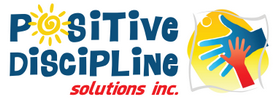Back to School with Routine Charts
 With the start of the new school year, comes the classic “morning rush”. How does everybody get out the door on time in the morning without leaving a wake of mess and emotional stress?
With the start of the new school year, comes the classic “morning rush”. How does everybody get out the door on time in the morning without leaving a wake of mess and emotional stress?
Routine charts are one of the most effective parenting tools when it comes to any sort of daily routine. If you’re familiar with Positive Discipline, you’ll know that it puts a strong emphasis on helping kids build life skills and responsibility. Routine charts do just that. Children learn to be responsible for their own behaviour, to feel capable and to cooperate in the family. If they are responsible for a small job that helps the family out each morning such as setting the table, pouring juice, etc., kids also learn about contribution.
From an early age, children are capable of following through with the necessary tasks and routines if they have visual reminders. It’s very important that you as the parent don’t impose the routine chart on your child. Rather, it is vital that you involve your child in creating their morning routine chart every step of the way. Children feel a much greater sense of accountability if they have helped create something and have had significant input.
To create the chart, sit down with your child at a time when you are both calm and relaxed. Together brainstorm a list of things that need to be done to be ready and out the door each day. After your brainstorming session, take pictures of your child performing each of the tasks that were agreed upon – i.e. eating breakfast, getting dressed, brushing teeth, etc. (Kids love this part!) Arrange the pictures in order on a chart and viola! — there’s the chart that will guide your child through all the tasks that need to be done to be ready to go each morning! (You can also add words, or just use the chart with pictures.)
Instead of nagging or lecturing, let the Routine Chart be the boss! Simply ask, “What is next on your routine chart?” Involving your child in setting a deadline for when their morning routines need to be completed is important, too. Again, the more a child is involved in the decision making, the more accountable they will be.
For more information on Routine Charts see the book Positive Discipline A to Z or attend a Positive Discipline Workshop.
